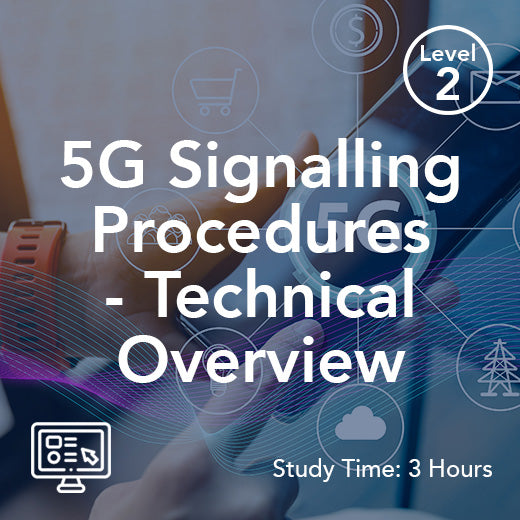Understanding the Basics: What is an Automatic Gain Controller?
- , by Paul Waite
- 8 min reading time
An automatic gain controller (AGC) is a crucial element in many electronic systems, designed to automatically adjust the gain of an amplifier to maintain a consistent output level despite varying input signal strengths. This technology is widely utilised in audio recording, broadcasting, and telecommunications, ensuring that the signal remains clear and stable without manual intervention. By dynamically regulating the volume, an automatic gain controller helps to prevent distortion and enhance the overall listening experience. In this article, we will delve into the fundamental principles of how an automatic gain controller functions, its applications, and its significance in modern electronics.
Introduction to Automatic Gain Control
Understanding Gain Control
Gain control is a fundamental concept in electronics and audio processing. At its core, it refers to adjusting the amplitude of a signal. This is crucial in ensuring that the output remains within a desired range, irrespective of the input fluctuations. An automatic gain controller achieves this by continuously monitoring the input signal and dynamically changing the gain. For instance, when the input signal weakens, the AGC increases the gain, and when the input is strong, it reduces the gain. This automatic adjustment is vital in preventing both distortion and undesirable noise. The goal is to deliver a stable and consistent output, which is particularly significant in audio applications where clarity is paramount. Understanding how gain control operates within an AGC can help in appreciating its importance in enhancing audio quality and maintaining signal integrity across various platforms.
History of Gain Control Technology
The evolution of gain control technology dates back to the early days of radio broadcasting in the 1920s. Initially, operators manually adjusted the gain to accommodate varying signal strengths, a task that required constant attention and precision. This manual method was labour-intensive and prone to human error. The advent of automatic gain control technology was a game-changer, introduced to automate this process and deliver consistent audio quality. By the mid-20th century, AGC systems became integral in radio receivers, significantly improving the listening experience by ensuring stable audio levels. Over time, the technology advanced, incorporating more sophisticated algorithms and components. These enhancements allowed AGCs to handle a broader range of frequencies and applications, expanding their use in telecommunications and audio recording. Today, automatic gain controllers are ubiquitous in modern electronics, reflecting their enduring importance and the continuous innovation in gain control technology.
How Automatic Gain Controllers Work
Key Components Explained
An automatic gain controller comprises several key components that work in tandem to ensure effective gain management. At the heart of an AGC system is the variable gain amplifier, which adjusts the gain based on the input signal. This component dynamically changes the amplification level to stabilise the output signal. Another crucial element is the detector, which monitors the incoming signal level. The detector continuously assesses the amplitude and provides feedback to the gain control circuit. This feedback loop is essential for maintaining the desired output level. Additionally, the control circuit interprets the detector’s feedback and determines the necessary gain adjustments. It effectively commands the variable gain amplifier to increase or decrease the amplification as needed. These components collectively enable the AGC to deliver a consistent audio or signal output, making it an indispensable tool in managing signal variations in various electronic devices.
Functionality in Different Devices
Automatic gain controllers are integral to a wide array of devices, each leveraging AGC technology to optimise performance. In audio recording equipment, AGCs maintain consistent sound levels, preventing sudden volume spikes and ensuring clear recordings. They are particularly useful in live recording scenarios where sound levels can fluctuate dramatically. In broadcasting, AGCs standardise audio output, providing listeners with a smooth and uninterrupted experience. Telecommunications also benefit from AGC technology; mobile phones and other communication devices use AGCs to enhance voice clarity and reduce background noise. Additionally, AGCs are employed in radar and sonar systems to manage varying signal strengths, ensuring accurate detection and interpretation. The versatility of AGC functionality across these diverse applications underscores its critical role in modern electronics, enhancing performance, reliability, and user experience across the board.
Benefits of Using Automatic Gain Controllers
Enhancing Audio Quality
Automatic gain controllers play a pivotal role in enhancing audio quality across various platforms. By automatically adjusting the gain, AGCs ensure that audio output remains consistent, free from abrupt volume changes that can disrupt the listening experience. This consistency is particularly beneficial in environments where sound levels can vary widely, such as live concerts or outdoor events. Moreover, AGCs help to minimise distortion by preventing the audio signal from exceeding the system's capacity. This results in a clearer, crisper sound output, which is especially important in professional audio recording and broadcasting where audio fidelity is paramount. Additionally, AGCs can help reduce background noise, ensuring that the primary audio content remains prominent and intelligible. By maintaining optimal audio levels, automatic gain controllers significantly contribute to a high-quality auditory experience, making them indispensable in both consumer and professional audio applications.
Consistency Across Various Inputs
One of the standout benefits of automatic gain controllers is their ability to maintain consistency across various input signals. In environments where input levels fluctuate—such as during live broadcasts or mobile phone conversations—AGCs dynamically adjust the gain to keep the output level stable. This ensures that the listener receives a uniform audio experience, free from sudden volume changes that could be jarring or disruptive. For instance, in telecommunications, AGCs help to smooth out variations in voice levels, providing clearer and more consistent communication. Similarly, in audio recording and broadcasting, they manage different sound sources, maintaining a balanced output that's crucial for high-quality production. This capability to harmonise disparate inputs makes automatic gain controllers invaluable in delivering reliable and professional-grade audio, enhancing overall user experience and ensuring that the output remains within an optimal range regardless of input variability.
Common Applications of Automatic Gain Controllers
Broadcast and Music Production
In the realms of broadcast and music production, automatic gain controllers are essential for maintaining audio quality and consistency. Broadcasting involves a mix of different audio sources—such as live commentary, music tracks, and pre-recorded segments—each with varying sound levels. AGCs automatically adjust the gain to prevent any one source from overpowering others, ensuring a balanced and professional audio output. This is vital for radio and television broadcasts where seamless audio delivery is crucial to audience engagement. In music production, AGCs help in managing the dynamic range of recordings. By controlling the gain, they prevent distortion and clipping, capturing the subtle nuances of performances. This results in a polished final product that faithfully represents the artist's intent. The ability of AGCs to adapt to varying input levels without manual intervention makes them indispensable tools in both broadcasting and music production, contributing significantly to high-quality audio delivery.
Telecommunications and Consumer Electronics
Automatic gain controllers are pivotal in telecommunications and consumer electronics, enhancing functionality and user experience. In telecommunications, AGCs ensure clear voice transmission by automatically adjusting the gain to compensate for variations in signal strength. This reduces background noise and improves voice clarity, which is essential for effective communication, especially in mobile and VoIP technologies. AGCs help maintain audio consistency across different environments, allowing users to converse without interruption or manual adjustment. In consumer electronics, such as smartphones, tablets, and audio devices, AGCs optimise sound levels for music playback and voice recordings, ensuring a consistent audio experience regardless of input variability. They also play a role in noise-cancelling headphones, dynamically adjusting audio levels to counteract ambient noise. This capability enhances the listening experience, making AGCs a valuable component in modern electronic devices. By providing automatic gain adjustment, AGCs contribute to the seamless operation and improved performance of telecommunications and consumer electronic products.
Future Developments in Gain Control Technology
Innovations on the Horizon
The future of gain control technology promises exciting innovations driven by advancements in digital signal processing and artificial intelligence. One area of potential growth is the integration of machine learning algorithms with automatic gain controllers, enabling devices to learn from audio environments and optimise gain settings more precisely. This could lead to more adaptable systems in complex audio scenarios, such as crowded public spaces or concert venues. Additionally, advancements in microelectronics are paving the way for more compact and energy-efficient AGCs, which could extend battery life in portable devices while maintaining high performance. Furthermore, the development of networked audio systems could see AGCs leveraging cloud computing to dynamically update and refine their settings based on vast datasets, enhancing audio quality across different platforms. As these technologies evolve, they will likely lead to more intelligent, responsive, and user-friendly gain control solutions, further embedding AGCs as a cornerstone of modern audio technology.
Challenges and Opportunities Ahead
As gain control technology advances, several challenges and opportunities lie on the horizon. One significant challenge is ensuring compatibility across diverse electronic devices and platforms. As more devices become interconnected, developing universal AGC standards that accommodate various input types and user expectations is crucial. Additionally, balancing performance with energy efficiency remains a pressing issue, especially in portable and battery-operated devices. However, these challenges also present opportunities for innovation. By leveraging advancements in AI and machine learning, developers can create more adaptive AGC systems that intelligently respond to changing audio environments. There is also the potential to enhance user personalisation, allowing individuals to tailor gain settings to their specific needs and preferences. Furthermore, as the demand for high-quality audio continues to grow, there are vast opportunities for AGCs to expand into new markets, such as virtual reality and immersive media, where precise audio control is essential for creating realistic experiences.

































